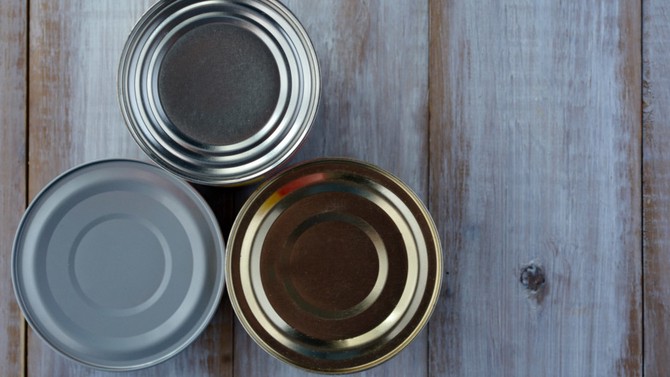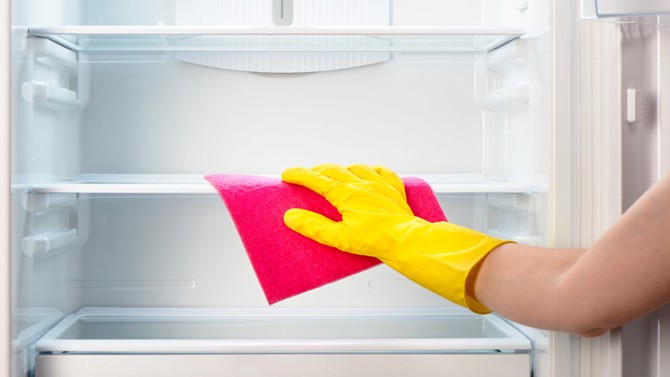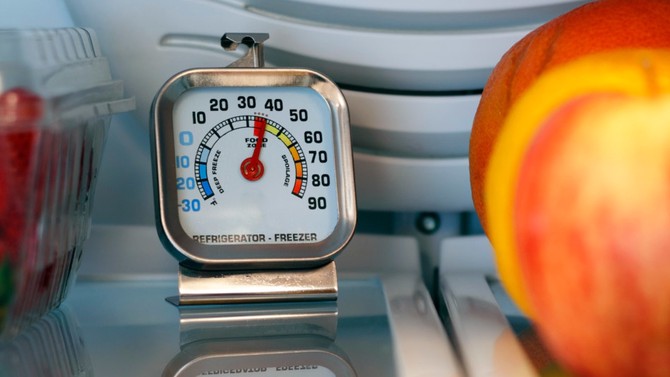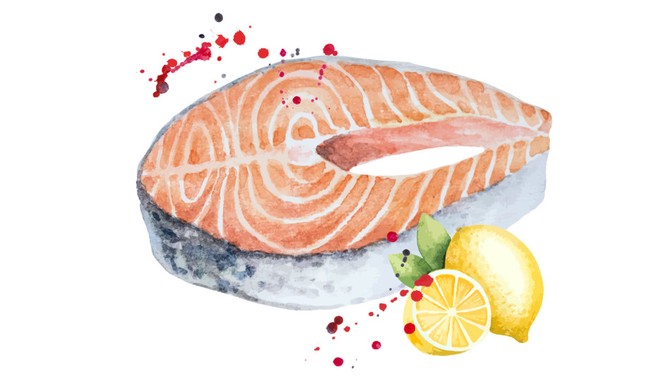There's a Right Way to Clean Your Refrigerator
Your guide to which food can stay and which should go, plus how to handle and store it all.
By Dr. Mehmet Oz

Illustration: Jack Hudson
After a long winter of comfort food, baked goods, and takeout, it’s time to lighten up for spring. Begin by clearing out your refrigerator and cabinets to make room for more nutritious options.
Make a Fresh Start
You know to get rid of moldy, rotten food, but you could probably use a quick primer on storing produce: Whole fruits and vegetables can remain at room temperature for several hours or a day, chopped fruits or veggies need to be refrigerated within two hours of cutting, and cooked vegetables last only three to four days in the fridge. Note that apples should be kept separately, whether in the crisper or on the counter: They release small amounts of ethylene gas, which can damage fragile produce like lettuce and bananas.

Photo: chameleonseye/istock
Examine Your Cans
If stored in a cool, dry place, unopened canned goods can retain their nutrients for months or even years; minerals and some vitamins will remain for as long as the food still tastes okay. To predict the shelf life of your can, consider the acidity level of its contents. The chemicals in high-acid foods react with the metal container, and over time this may change the flavor and texture as well as reduce nutritional value. Fruit, juice, tomatoes, pickled vegetables, and vinegar-based dressings should be consumed within 12 to 18 months after purchase. Canned foods with low acidity, like corn and beans, are safe to eat for two to five years. Of course, get rid of cans that are bulging, leaking, or rusting, or spurt liquid when opened (regardless of purchase date), as they may have been contaminated.

Photo: Andrew Rafalsky/istock
Scrub Safely
Drips and spills in cabinets and the refrigerator can create a home for illness-causing bacteria. However, some household products used to clean them contain chemicals that have been linked to serious health problems. The Environmental Working Group tested 94 kitchen cleaners and gave 62 of them a grade of D or F due to factors including their potential to exacerbate asthma, respiratory problems, or allergies (see the full list at ewg.org). Take a pass on low-ranking products and any solvents or abrasives that can leave a chemical odor on things you plan to eat. The safest way to wipe down food storage areas is with a food-based solution: Mix a half cup of vinegar and a quarter cup of baking soda in a half gallon of hot water.

Photo: Serenethos/istock
Help Food Stay Chill
To keep the cold in and bacteria out, the temperature of your refrigerator should be 40 degrees or below, and your freezer should be 0 degrees or below. Not all controls show the temperature, though, and even when they do, the indicator inside isn’t always properly calibrated. Inexpensive freestanding appliance thermometers (one in the fridge, another in the freezer) allow you to monitor settings. Remember that objects stored in the door are subject to gusts of warm air, so tuck meat, seafood, dairy, and eggs in the back. And avoid overcrowding; air needs to circulate around items to keep them cold.

Illustration: Elena Medvedeva/istock
Treat Your Meat Well
Always store packages of raw meat and seafood on the bottom shelves of the refrigerator, so that if they drip they won’t contaminate other food. Fresh meat will keep for a couple of days in the fridge and, depending on the cut, up to a year in the freezer—just in time for next year’s big cleanout.
Pin It!

Want more stories like this delivered to your inbox? Sign up for the Oprah.com Healthy Body Newsletter!
From the March 2017 issue of O, The Oprah Magazine

